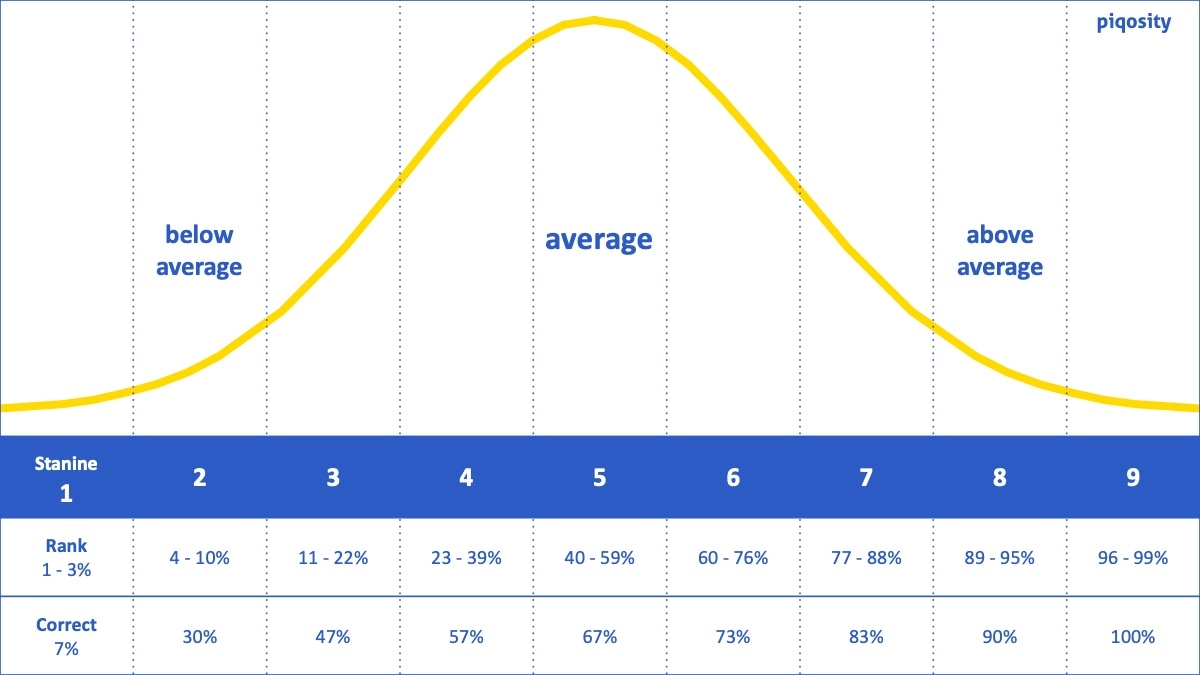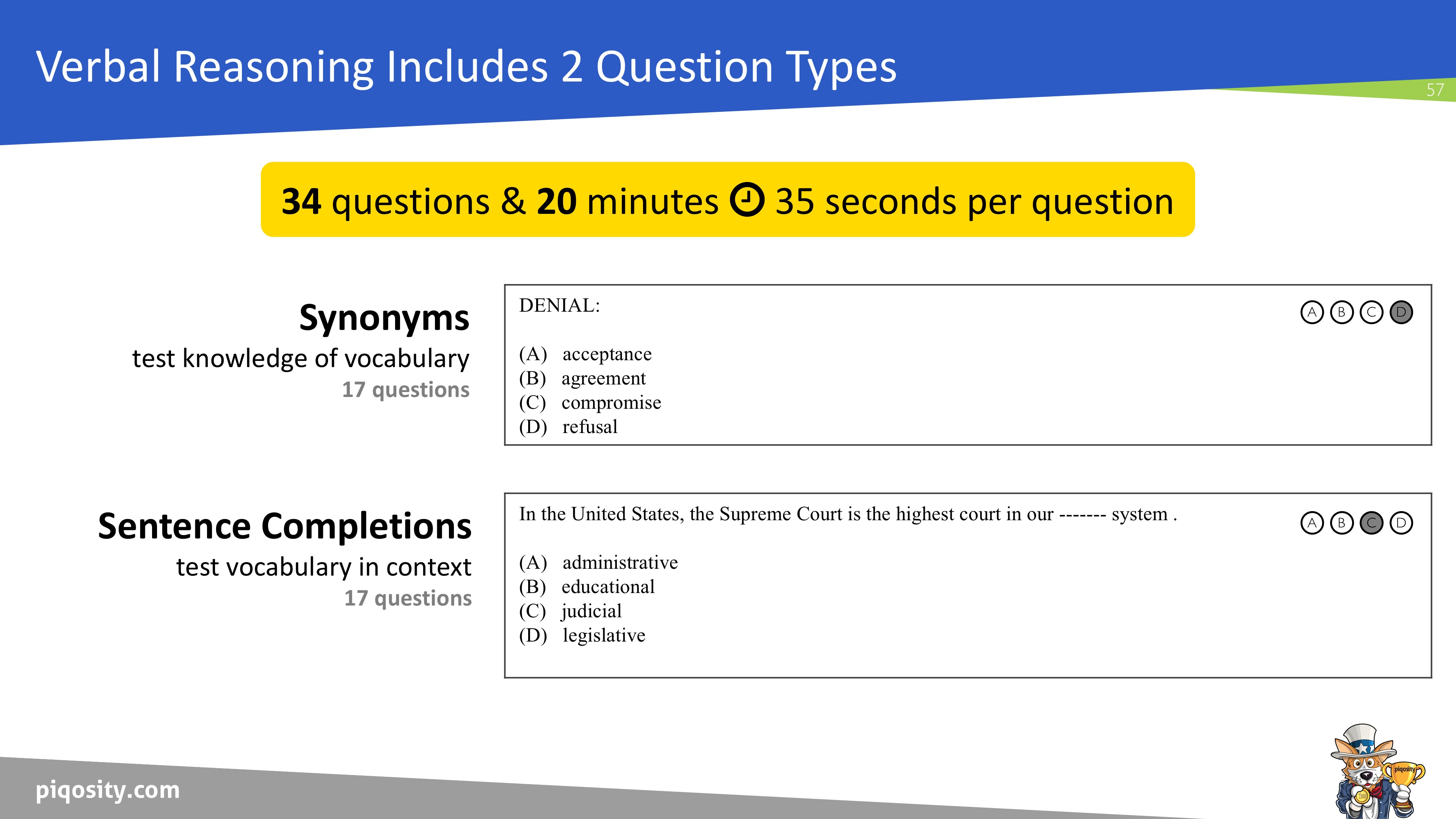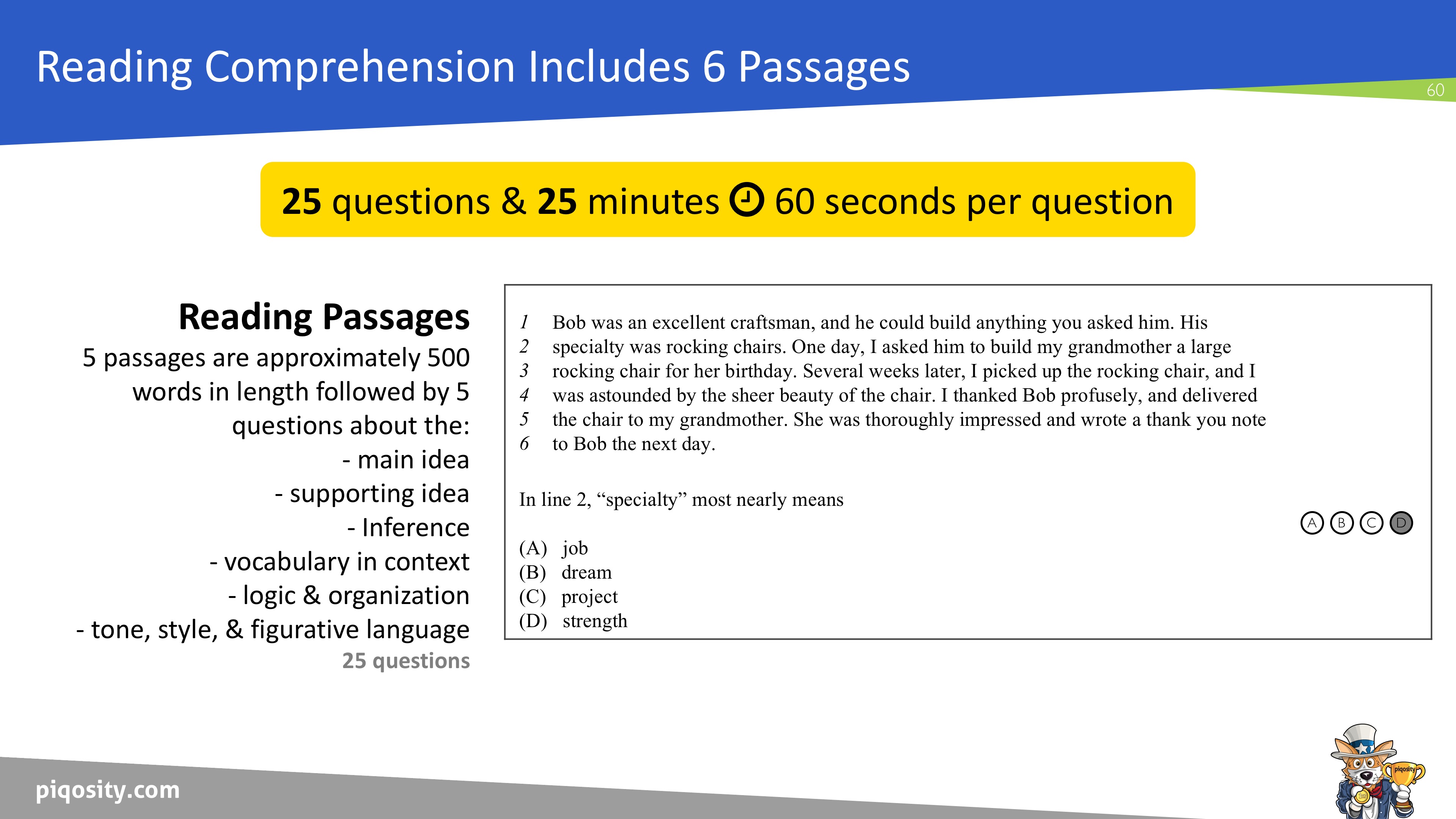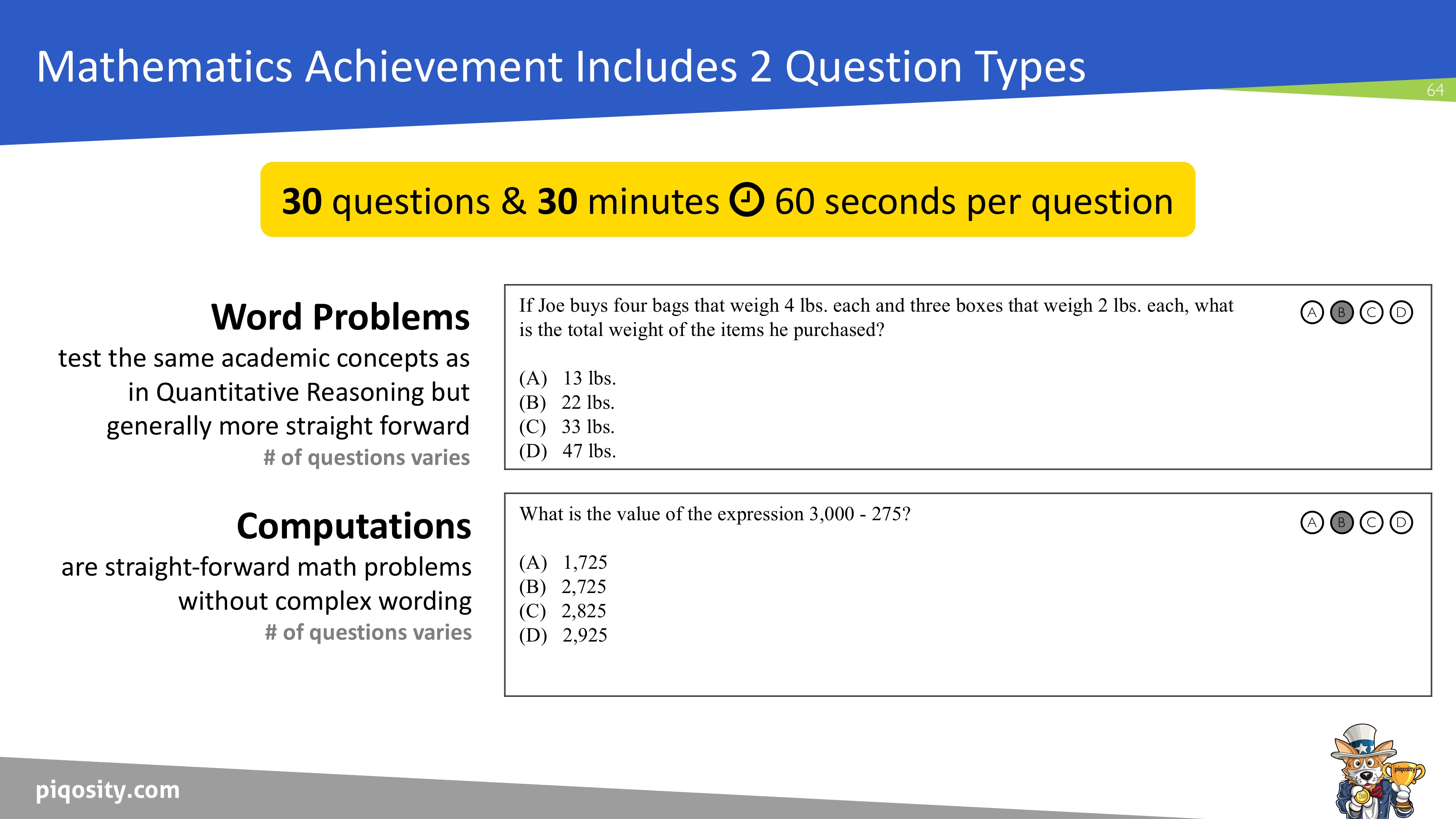
If you’re considering applying to private schools and preparing for the admissions process, you may be wondering, “Is the ISEE test hard?” Private school admissions offices use Independent School Entrance Examination (ISEE) scores to help determine which applicants belong in their student body, so this test is meant to be challenging to the average student—but just how hard is it? Here’s everything you need to know about the difficulty of the ISEE, from the different levels of the exam to the most difficult topics that are tested.
How the ISEE Test is Designed
The ISEE is a peer-normed standardized entrance exam required by many private schools across the country for admission. There are three distinct ISEE difficulty levels for three sets of grade levels—the ISEE Lower Level is designed for grades 5-6, the Middle Level is for grades 7-8, and the Upper Level is for grades 9+. The level of the ISEE determines which particular topics are tested, the way many questions are presented, and the length of the test (in terms of both timing and word count).
The ISEE tests student’s reading and math skills across five sections:
| ISEE Section | Time | Number of Questions |
|---|---|---|
| Verbal Reasoning | 20 Minutes | 40 Questions (34 LL) |
| Quantitative Reasoning | 35 Minutes | 37 Questions (38 LL) |
| Break | 5-10 Minutes | |
| Reading Comprehension | 35 Minutes (25 LL) | 36 Questions (25 LL) |
| Mathematics Achivement | 40 Minutes (30 LL) | 47 Questions (30 LL) |
| Break | 5-10 Minutes | |
| Essay | 30 Minutes | |
| Total | ~2 Hours 40 Minutes (2:20 LL) | 160 + Essay (127 + Essay LL) |
As we mentioned, the ISEE is peer-normed—this means that students are scored relative to each other. Specifically, students taking the ISEE are scored in relation to students at their grade level who took the test over the last three years (called the “norm group”). Weeks after taking the exam, students will receive their ISEE test scores, including their rank and their Stanine Score. This will show where their results fall on a normal bell curve:

The average ISEE scores for private schools range from 4–8, depending on a particular school’s academic rigor and acclaim. Scores of 7 and higher represent the top 25% of test-takers and are most preferable for competitive schools.
So, if a student wants to get an excellent ISEE score, they’ll need to surpass at least ~75–80% of their fellow testers from the past few years. Considering that the pool of ISEE-takers is largely composed of high-achieving students aiming for top high schools, earning a great Stanine Score is no easy task.
The ISEE vs. EOC Tests
Most students are familiar with state-specific standardized testing, such as End of Course (EOC) exams. While each state has its own distinct test, a typical EOC exam evaluates elementary and middle school students’ math and reading knowledge, and/or high school English I, English II, and Algebra I learning. (ISEE’s CTP exam is an example, and so are state-specific tests like STAAR (TX), FAST (FL), and CAASPP (CA). Many other states use two distinct programs for 3–8th grade versus high school EOC testing.)
While both the ISEE and EOC exams test the core math and reading abilities of elementary through high school students, the ISEE’s approach is quite different from that of a typical standardized test. Most EOC exams are not timed, often allotting a half day or even a whole school day to administer the test, while students must complete the ISEE in 2.5 hours. The ISEE is also longer, consisting of four multiple-choice parts and one essay; EOC exams are typically one or two multiple-choice parts.
In addition to the faster pace required on the ISEE, its content is also more difficult than what’s tested on an EOC exam. The ISEE covers more advanced topics—it tests the math and reading skills of a wider range of grades in each level of the exam, while EOC tests are assigned to a particular grade level or course. Further, the ISEE tests students using more unique question structures that they may not be familiar with (such as Synonyms questions or Quantitative Comparisons) while EOC exam questions tend to be more standard and straightforward.
The ISEE also does not provide formula sheets or allow calculators, which standardized EOC tests usually do. Overall, the ISEE is more difficult than a typical EOC test because students are asked to do more—they must answer more questions from a wider range of topics in less time.
Which ISEE Section is the Hardest?
Now, you understand why it’s difficult to earn a top score on the ISEE and what makes it different from your standard EOC test—but how difficult is the content on the test itself? We used official ISEE practice tests from the ERB—one free test, and one $380 test—to investigate the content of the exam. Let’s dive into the difficulty of ISEE content, including the question pacing and topic areas of different sections.
Verbal Reasoning
The ISEE Verbal Reasoning tests students’ vocabulary knowledge. In this fast-paced first section of the exam, students must answer two questions every minute to finish in time (20 minutes for 40 questions).
The two types of questions on this section are Synonyms (students select the synonym of a given word) and Sentence Completions (a “fill-in-the-blank” question, testing vocabulary skills with context). The way these questions are structured is straightforward, so the complexity of this section lies in its selection of vocabulary words.
All levels of this exam present students with uncommon words in a range of difficulty. We examined the words on ISEE VR tests using Google Books Ngram Viewer, which details the frequency that words are used across published literature. This research found that the average ISEE word appears in about 0.002% of Google’s database.
Across all levels, the ISEE tests students on a wide range of uncommon words. To illustrate this: “the” appears in 4.2% of texts, a simple word like “ready” appears in .01%, and “prepare” appears in .002%. ISEE LL word “fracture” appears in .001%, Middle Level word “prosecute” appears in .0001%, and Upper Level word “acquiesce” appears in .00006% of published texts. This means that a typical Upper Level word is 100x less common than a Lower Level word.

Quantitative Reasoning
The second section of the ISEE is Quantitative Reasoning, where students have 35 minutes to answer 37 math questions (allowing ~56 seconds per question). This section’s question types are Word Problems and Quantitative Comparisons, which contain two values students must compare. Both ISEE math portions test concepts that fall under the following topics:
- Numbers and Operations
- Algebra
- Geometry
- Measurement
- Data Analysis & Probability
The specific concepts tested match the grade level of the exam. The most advanced ISEE Lower Level math topics are ratios & proportions, algebraic expressions, and probability. The Middle Level ISEE tests students on more complex Algebra topics, such as multiplying polynomials, function notation, simple & compound interest, and graphing. Finally, the math content tested on the ISEE Upper Level extends through Algebra II and even some Pre-Calculus: this includes matrices, permutations, quadratic equations and graphing, and even more advanced topics (such as matrix multiplication, standard deviation, and trig).
The math topics tested on each exam level vary in difficulty, but what about the way those topics are tested? We used two metrics to develop a difficulty scale of 1 to 5 for ISEE’s math questions:
- Length of time required to read and solve the problem.
- Number of distinct concepts required to solve the problem.
Using this scale across all ISEE levels, we found that the average Quantitative Reasoning question difficulty is around 3–3.5 out of 5. (The hardest was Lower Level and the easiest was Middle Level.)
Not only does question complexity and pacing influence difficulty, but the number of graphics on each test also plays a role in how students understand and interact with math problems. Graphics generally aid students to better understand problems, but only if they take the time to analyze them. We found that the ISEE Lower Level uses more graphics than the other levels, but the ISEE will generally ask at least 15 questions that use graphics.
Students generally consider Quantitative Reasoning to be the most difficult ISEE portion.

Reading Comprehension
For the Middle and Upper Levels of the ISEE, students must read 6 passages and answer 36 comprehension questions in 35 minutes—that’s just under 6 minutes per passage to both read the text and answer 6 questions. (On the Lower Level ISEE, students have 25 minutes to read 5 passages and answer each set of 5 questions.)
The genres of the passages can be narrative, social science, humanities, or (for ML and UL) science. Narrative passages tend to be the easiest because students are most familiar with that style of writing; conversely, some may struggle to stay engaged with dry, scientific writing.
We evaluated the reading difficulty level of ISEE passages using their Flesch–Kincaid readability scores, which measure the required grade level for a person to understand a passage (based on sentence and word length). According to this scoring, passages themselves don’t get excessively difficult on the ISEE: the ISEE Lower Level Flesch–Kincaid score is third grade, the Middle Level score is ninth grade, and the Upper Level score is fifth grade.
There are six types of ISEE Reading Comprehension questions: Main Idea, Supporting Ideas, Inference, Vocabulary in Context, Organization and Logic, and Tone, Style, and Figurative Language. Topic difficulty mostly depends on a student’s personal strengths and weaknesses; still, higher-level thinking and breadth of knowledge are tested most in Inference and Tone, Style, and Figurative Language questions, which make up roughly 10-15% and 5-10% of ISEE tests, respectively. (Supporting Ideas questions, considered by many students to be the easiest, occur the most often.)
As you can see, the Reading Comprehension portion isn’t very difficult—students generally feel like they do the best on this section. Consequently, this makes Reading Comprehension the most competitive ISEE section. Most students taking the ISEE have been exposed to reading from a young age, so scoring well on this section compared to your peers requires a high level of accuracy.

Mathematics Achievement
The final multiple-choice section of the ISEE is Mathematics Achievement, which tests simpler concepts than Quantitative Reasoning but is known for having questions that require more steps to solve. Students have 40 minutes to answer 47 questions, which is a pace of about 50 seconds per question. (The Lower Level ISEE asks 30 questions in 30 minutes, allowing 1 minute per question.)
Like for Quantitative Reasoning questions, we evaluated the questions on the Mathematics Achievement section using a difficulty scale of 1–5, based on the length of time and number of steps required to solve a problem. We found that the questions were slightly more difficult than Quantitative Reasoning questions on the Upper Level test (an average question difficulty of 3.5/5) and slightly easier for the Lower and Middle Levels (average difficulty of ~2.96).
Mathematics Achievement questions have fewer graphics than on the Quantitative Reasoning section. There are roughly 10–20 throughout the section, a rate of about 0.4 graphics per question (closer to 0.5 for the Lower Level test). While both ISEE math portions cover the same general topics, Mathematics Achievement tests a wider range of concepts across the board. The Upper Level Mathematics Achievement portion tested 33 particular topics across both official exams, compared to 22 in Quantitative Reasoning.
While the Quantitative Reasoning section tests students’ reasoning skills with complex word problems and comparisons, the Mathematics Achievement section tests their abilities to solve straightforward problems of a wider variety of topics.

How Difficult is the ISEE Essay?
The fifth and final part of the ISEE exam is the essay—an unscored personal writing assignment in response to a prompt. Students have 30 minutes to read the prompt and develop an essay up to two pages in length. There are no “right” or “wrong” answers because schools use the essay as a non-graded look into a student’s personality, background, and communication abilities.
The ISEE essay prompts are about you, the student. Your prompt might ask about your favorite school subjects, experiences you’ve had, people in your life, or hobbies and interests you’re passionate about. These ISEE essay sample prompts are examples of what students have written about on this section of the test:
- If you could change an action you took in the past, what would you change and why?
- Describe a community service project you have completed or would like to undertake. Explain why this choice has importance to you.
- What aspects of high school interest you the most?
- If you could have dinner with any person (real or fictional) from any point in time, who would you choose and why?
As you can see, the ISEE essay tests students’ ability to self-reflect. This final ISEE section isn’t generally considered very difficult since it doesn’t test any particular knowledge and is evaluated without scoring or comparison to a norm group. Still, the essay’s open-endedness can be daunting for some students, especially those who haven’t practiced reflective writing ahead of time. The 30 minutes allotted for this paper can also make it difficult for slow writers to finish in time.
So, Is the ISEE Test Hard?
For most students, Quantitative Reasoning is the hardest section while Reading Comprehension is the easiest. The ISEE asks many questions in different ways than other standardized tests students are used to taking, but the content on the exam generally matches what students learn in school.
It’s important to note that many students take an ISEE exam that also tests math content a few grade levels ahead of them. Consider a 9th grader taking the Upper Level ISEE: this student will be tested on the middle school math and Algebra topics they know in addition to Algebra II and even PreCal content, but they’ll be scored alongside students in their same grade. They aren’t expected to know some of those higher-level topics, but being able to reason through them to find the right answer will boost their score in comparison to their norm group.
SO—is the ISEE test hard overall? Yes, but anyone can score well if they prepare for the exam properly. Like most tests: the more you study for the ISEE, the easier it will be to take.
Make the ISEE Easier with Personalized Test Prep
The ISEE is not supposed to be an easy task. Competitive private schools have high standards because they want students to be able to succeed at their school—applicants must be demonstrably knowledgeable and motivated learners, which means they remember content from school and prepare for the admissions test ahead of time to earn a great score.
Private school applications are due around January, so students typically begin by taking practice tests and reviewing material in June/July, then they take and retake the real test during the school year as they continue studying. If you’re looking for the best ISEE test prep, Piqosity’s affordable ISEE course has you covered!
Along with full-length, online ELA and Math courses for grades 6-11 and ACT/SAT prep courses, Piqosity offers a wide range of test prep materials for the Lower Level, Middle Level, and Upper Level ISEE, perfect for both tutored and self-guided practice. Our market-leading ISEE prep courses include:
- 12 Full-Length ISEE Practice Tests (for EACH level of the exam)
- Over 3,000 practice questions (equivalent to 20 tests’ worth)
- Over 50 concept lessons and tutorial videos
- Real-time Stanine Score predictions
- Adaptive, personalized practice with the help of Piqosity Virtual Tutor
- Interactive interface allowing teachers, tutors, or parents to assign and track student work
- …And much more!
If you’re at all interested in private schools and taking the ISEE, we encourage you to take our mini diagnostic ISEE online practice test, available for free after registration with our Community Plan. Plus, Piqosity offers two, absolutely free ISEE practice tests for those with a community account! When you’re ready to upgrade, Piqosity’s year-long accounts start at only $89.


